 June 25, 2015 John E. Ross, KD8IDJ, Editor
| ||||||||
League Continues Efforts to Secure Senate Sponsorship for Amateur Radio Parity Act of 2015 ARRL representatives are continuing efforts on Capitol Hill to secure sponsorship for a Senate companion bill to the Amateur Radio Parity Act of 2015 -- H.R. 1301. ARRL Regulatory Information Manager Dan Henderson, N1ND, is optimistic that Amateur Radio Parity Act legislation will be active in both the US House and Senate this summer. The proposed legislation, which has bipartisan support, would direct the FCC to extend its rules relating to reasonable accommodation of Amateur Service communications to private land-use restrictions.
Henderson stressed that when a companion US Senate bill is "dropped" -- submitted, in congressional parlance -- it will have a completely different number than the current House bill, H.R. 1301. Once that happens, ARRL members will be urged to contact their two US senators to encourage them to cosponsor the Senate bill. Until then, he stressed, League members should refrain from contacting any US Senators, because the only active bill is the one in the US House -- H.R. 1301. "You can't ask US Senators to cosponsor a bill in the US House," Henderson said, "and you can't ask US House members to cosponsor a bill in the US Senate." Henderson has been sorting through letters from ARRL members for hand-delivery to Capitol Hill. He advised that letter writers must include their name and address on their correspondence, because members of Congress are interested in voters. He said letters that are not signed, that don't include the constituent's address, or that are directed to the wrong Member of Congress cannot be used. Henderson has spent a lot of his time recently meeting with congressional staffers and occasional US House members, in an effort to gain additional cosponsors for the bill. As of June 25, there were 79 cosponsors of H.R. 1301, and Henderson said he anticipates a few more House members will sign onto the bill soon. The latest cosponsors of H.R. 1301 are Rep David Rouzer (NC) and Rep Janice Hahn (CA).
"The bill is being well received," Henderson said, "and we anticipate a mark-up session in the House Subcommittee on Communications, Technology, and the Internet after the August recess, and following that, hearings will be scheduled." US Rep Greg Walden, W7EQI, chairs the subcommittee that will consider the bill. Henderson said the Congress's upcoming August recess would be a good time to meet with lawmakers while they are in their home states and districts. He suggested contacting a House member's local constituent office to arrange a visit. "It is not too early," he added. "Perhaps you could convince the member of Congress to visit your club meeting." He also recommended that those interested in following the trajectory of H.R. 1301 should sign up to receive the ARRL's free Legislative Update Newsletter. ARRL members are encouraged to contact their member of Congress by writing personalized, signed letters on paper, based on the sample letter available on the ARRL HR 1301 web page. Letters should include the constituent's address. Send letters to ARRL Headquarters for hand delivery to the appropriate House members to: ARRL, ATTN HR 1301 Grassroots Campaign, 225 Main St, Newington CT 06111. States, Counties, Communities Recognize the Value of Amateur Radio Several US states, counties, and communities have taken the opportunity to formally recognize the value of Amateur Radio and the occasion of ARRL Field Day. Connecticut Gov Dannel Malloy has proclaimed June 22-28 as Amateur Radio Week. His proclamation noted that the ARRL is headquartered in Connecticut and has been "promoting and advancing the art, science, and enjoyment of Amateur Radio" for more than 100 years. Gov Malloy cited Amateur Radio's public service contributions as well as its role in providing "a bridge between peoples, societies, and countries."
Florida Gov Rick Scott has proclaimed June 21-27 as Amateur Radio Week in his state. Scott cited Amateur Radio as a "critical communication link in the event of a disaster," noting the services that Amateur Radio Emergency Service volunteers provide in Florida's three ARRL sections. Gov Scott also expressed appreciation for SKYWARN volunteers, many of them radio amateurs, who serve as weather spotters to assist the National Weather Service. Indiana Gov Mike Pence has declared June 22-28 as Amateur Radio Week in his state. Indiana Section Public Information Coordinator Joe March, KJ9M, said Field Day-oriented public service announcements are airing on radio stations throughout the Hoosier State. Efforts have been under way in Indiana to disseminate media releases on Field Day. Iowa Gov Terry Branstad has proclaimed June 22-28 as Amateur Radio Field Week. He cited Amateur Radio's contributions in times of emergency and natural disaster, and its role in moving forward radio communication and the science of electronics. His Kansas Gov Sam Brownback has recognized June 27-28 as Kansas Amateur Radio Field Day and encouraged all with an interest in Amateur Radio to visit a Field Day site. The governor's proclamation cited the role of Field Day in emergency preparedness. New Hampshire Gov Maggie Hassan proclaimed June as Amateur Radio Month. She cited Amateur Radio's role in serving as "a bridge between peoples, societies, and countries by creating friendships and the sharing of ideas" as well as its value in public service during emergencies and public events. She encouraged New Hampshire citizens to recognize Field Day weekend as a "demonstration of the radio amateur's skills and readiness to provide self-supporting communications without further infrastructure required."
Oklahoma Gov Mary Fallin has proclaimed the week of June 21 as Amateur Radio Week and urged all Oklahomans "to pay tribute to the Amateur Radio operators of our state." Fallin's proclamation cites ham radio's "significant role in the development of worldwide radio communication as well as its public service contribution. It notes that Field Day "promotes the honing of radio amateurs' emergency preparedness skills." Speaking with ARRL Oklahoma Section Manager Lloyd Colston, KC5FM, Gov Fallin cited recent severe weather that Oklahoma has experienced in recent months, including tornadoes and flooding. Washington Gov Jay Inslee has proclaimed the week of June 21 as Amateur Radio Week. He cited Amateur Radio's contributions to the public in times of emergencies and disasters. "Amateur Radio operators deserve our recognition and a salute for hundreds of jobs well done," the proclamation said. Wisconsin Gov Scott Walker has proclaimed June 27-28 as Amateur Radio Week. Gov Walker recognized Amateur Radio's public service role and Field Day as "a 24-hour emergency preparedness exercise and demonstration" of skill and readiness to provide "self-supporting communication." The Butts County, Georgia, Board of Commissioners has declared June 22-28 as Amateur Radio Week in the county. Crossville, Tennessee, Mayor James Mayberry has proclaimed the week of June 22-28 as Ham Radio Week, in advance of Field Day. In Idaho, the Kamiah City Council has proclaimed the week of June 22-28 as Amateur Radio Week. The Council also waived the fee for use of the city park for the Three Rivers Amateur Radio Club's Field Day operation. Local broadcasters are airing Amateur Radio promotional announcements. New World Distance Records Set on 2.3 and 3.4 GHz Ham Bands Two California radio amateurs -- one of them in Hawaii -- have set new world distance records on the 2.3 and 3.4 GHz microwave amateur bands. Wayne Overbeck, N6NB, operating from a radio-equipped rental car on the Big Island of Hawaii, worked Gregory Campbell, W6IT, operating from Overbeck's own fixed station near Orange, California, on both bands -- a distance of more than 4024 km (2495 miles). The contacts blew away records that had stood for more than 20 years, and more than doubled the previous distance records for a two-way voice (SSB) contact at those frequencies, Overbeck said, adding that most previous microwave distance records have been set using CW. "Ours was the first-ever SSB contact between Hawaii and the mainland on 2304," Overbeck noted. He said Chip Angle, N6CA, and KH6HME (SK) made the first transpacific SSB contact on 3.4 GHz in the 1990s. The record-setting contacts occurred on June 19 (June 18 in Hawaii) on 2.3 GHz at 0257 UTC and at on 3.4 GHz at 0300 UTC. W6IT was in grid square DM13cs, while N6NB/KH6 was in BK29hq. According to the database of distance records maintained by Al Ward, W5LUA, the old records were 3982 km, set on by N6CA and KH6ME on July 14, 1994, on 2.3 GHz (CW) and on July 28, 1991, on 3.4 GHz (SSB).
Overbeck flew to Hawaii carrying gear for all bands from 144 MHz through 10 GHz "in two large suitcases, plus a roll-aboard and a backpack" -- weighing about 150 pounds in all. In Hawaii, he rented a small SUV and built a rover-style station that included a rotating roof platform, constructed using parts obtained from a home improvement store. Overbeck said that when a tropospheric duct formed that could convey signals thousands of miles across the Pacific, he drove around the slopes of Mauna Loa -- 13,000 feet up --and selected several promising sites for long-haul DX, "not necessarily the highest possible sites," he added. "By Thursday, June 18, the duct seemed to be peaking," he said. W6IT activated N6NB's fixed station and quickly worked N6NB/KH6 on six bands, including 2304 and 3456 MHz for world records. Overbeck said he also heard W6IT on 902 MHz and 5.7 GHz, but local, non-amateur interference in California -- likely from Part 15 Wi-Fi devices -- prevented W6IT from hearing N6NB/KH6 on those bands. A video of the record-setting 2304 GHz contact between N6NB/KH6 and W6IT (recorded from the Hawaii end of the circuit) is online. OJ0B on Market Reef Logs Hundreds of 2 Meter Moonbounce, Meteor Scatter Contacts The recent Market Reef OJ0B expedition resulted in 462 contacts via 2 meter Earth-Moon-Earth (EME) and meteor scatter activity with stations on all continents. The activity this month was a somewhat belated 50th anniversary celebration of the historic first 2 meter EME contact in 1964. More than 50 hams from the US and Canada were among those that worked OJ0B on 2 meter EME. The OJ0B activity shut down on June 15 after making more than 8200 contacts on all bands and modes.
All contacts have been uploaded to ClubLog and OQRS. Suominen, an early VHF pioneer, was deeply involved in the science of VHF communication and strongly believed that 2 meter EME contacts
-- dismissed by experts as being out of reach for radio amateurs -- were indeed possible. His 2 meter EME contact with W6DNG in California proved the skeptics wrong, scoring more than one VHF "first." Market Reef (JP90nh) is located between Finland and Sweden. The Finnish Lighthouse Society has been restoring the Market Reef Lighthouse there, which is now fully automated. Dedicated quarters on the reef are available for Amateur Radio operation, with power from generators and solar arrays. -- Thanks to Martti Laine, OH2BH, and Jarmo Jaakola, OH2BN ARRL 2015 Hurricane Season Webinar Set for July 20 The ARRL will host a 2015 Hurricane Season webinar Monday, July 20, getting under way at 8 PM EDT (July 21, 0000 UTC). The approximately 90-minute session will address the role of Amateur Radio during the 2015 Hurricane Season.
The program will include presentations by representatives of the National Hurricane Center and WX4NHC, the VoIP Hurricane Net, the HWN, the Canadian Hurricane Centre, and the ARRL. Webinar registration is open to all, but should be of particular interest to radio amateurs in hurricane-prone areas. The webinar will conclude with a Q&A session. Register online. -- Thanks to Mike Corey, KI1U, ARRL Emergency Preparedness Manager ARRL Offering 20 Percent Off on Select Antenna Publications Summertime is antenna time! To celebrate, ARRL is rolling back prices on some of the hottest antenna publications in Amateur Radio. For a complete list of discounted publications, visit ARRL's "Antenna Books Price Rollback" page online. ARRL publications are available from the ARRL Store or from your ARRL Publication Dealer, or call 860-594-0355 (toll-free in the US, 888-277-5289) to order. E-mail ARRL Publication Sales for more information. Ohio ARES "NVIS Antenna Day" Concludes: The Truth is Up There Ohio ARES NVIS Antenna Day on April 25 attracted participation from some 100 Buckeye State stations in an effort to determine which configurations of near-vertical incidence skywave (NVIS) antenna offer the best results. ARRL Ohio Section Emergency Coordinator Stan Broadway, N8BHL, said that while the results of the unscientific test were inconclusive, some configurations did seem superior to others.
"The goal was simple: Try different antennas, see which worked," Broadway explained. "Each station was responsible for providing accurate signal reports, so performance could be evaluated. Results would be tallied and digested in hopes of creating a short list of winners that ARES teams could keep in their toolboxes." Most operation was Field Day-style on 40 meters. "This was not a contest," Broadway pointed out, "so, groups gathered not only to test antennas, but to cook out and enjoy each other's company." He said one group had so much fun making contacts with their first dipole that they abandoned any further antenna work and just had fun. Groups most frequently deployed simple dipoles. End-fed and longwires were popular too, as well as a handful of loops. A half-dozen antennas were based on the military AS-2259 design -- crossed inverted Vs with about 10 feet of elevation in the middle. Other designs included antennas erected above ponds, inverted Ls, and even a Moxon aimed straight up. "For our operation, there just wasn't that much difference between the more specialized NVIS designs and any good antenna," Broadway concluded. The longwire was among those at the bottom of the list, with signal reports uniformly 2 or 3 S-units below other choices, according to Broadway. "But contacts were made, and communication took place," he added. "It's a very portable antenna, too."
Determining the "best" antenna turned out to be harder. Dipoles -- flattops or inverted Vs -- installed at lower heights in keeping with NVIS concepts, provided reasonable reports, but erecting them at a low height didn't seem to make much difference. If any antenna topped the list, it was those fashioned after the AS-2259 configuration. "These all performed very satisfactorily for their owners, and were uniformly given good signal reports," Broadway said. "They weren't 40 dB above the competition, but they were solid." While the NVIS antenna experiment had inconclusive results, "we did prove that our hobby can be a lot of fun, even for the old heads, when we get back to some basics -- experimenting, equipment and team building, and trying our stuff out," Broadway said. Concluded Jefferson County participant Gregory Day, N8GD, "After 34 years, ham radio is still fun!" Ohio ARES is planning an even bigger NVIS event next April, and will extend an invitation to neighboring ARRL sections to join in. EO-80 (QB50p2) FM Transponder Testing is Successful AMSAT-Francophone has reported successful testing of the FM transponder on EO-80 (QB50p2). Two 2U CubeSats, QB50p1 and QB50p2, launched in June of 2014 into a polar orbit at an altitude of approximately 420 miles. QB50p2 is equipped with a secondary FM transponder payload developed by AMSAT-F.
Although the transponder was turned off at the end of that single orbit, it is anticipated that it will be activated permanently within a few weeks, possibly at the 500 mW or 1 W level. EO-80 frequencies: 145.880 MHz, 1200 bps BPSK or CW telemetry; FM transponder, 435.080 MHz (210.7 Hz tone) uplink; 145.840 MHz downlink (also 9600 bps FSK data). QB50p1 (EO-79), also known as FUNcube-3, is equipped with a linear transponder for SSB and CW. Initial testing was successfully completed in April, and its transponder should also be enabled full-time in a few weeks. -- Thanks to AMSAT News Service via Gerard Auvray, F6FAO, and AMSAT-UK AMSAT-NA Announces 2015 Board of Directors Candidates AMSAT-NA has announced the slate of candidates for the 2015 Board of Directors election. The candidates are Barry Baines, WD4ASW; Jerry Buxton, N0JY; Steve Coy, K8UD; Drew Glasbrenner, KO4MA; Mark Hammond, N8MH; EMike McCardel, KC8YLD; Bob McGwier, N4HY, and Bruce Paige, KK5DO.
Ballots will be mailed to the AMSAT-NA members by July 15, 2015. Completed ballots must be received at the AMSAT office by September 15, 2015, in order to be counted. Ballots sent to AMSAT members living outside North America will go by air mail. If you have not received your ballot package within a reasonable period, contact AMSAT. AMSAT urges members to review the candidate statements that will accompany the ballot and to vote. Members may choose up to four candidates. -- Thanks to AMSAT News Service ARRL NTS Confers Special Service Awards The National Traffic System (NTS) conferred its prestigious Special Service Award upon two radio amateurs at the 2015 Dayton Hamvention® in May. The Special Service Award recognizes volunteers for outstanding, selfless, and lengthy service to the National Traffic System. The Pacific, Central, and Eastern Area NTS committees determine award recipients. Award winners receive the Special Service Award Plaque. Jim Wades, WB8SIW, the editor of QNI -- An NTS Newsletter, announced the award winners at Dayton. Honored were:
Joseph F. Tracey, KB3LNM, Finksburg, Maryland, for his development and rollout of the NTSD Parser application, intended for use by ARES and other radio operators originating messages to format ARRL Radiograms for submission into the NTS Digital network via Winlink 2000. The software will generate appropriate message headers and footers, based on address information in each message, and place the messages in output files, sorted by precedence. An NTS Winlink Target Station receives the messages and delivers them via RF paths, typically within 1 hour. Founded in 1949 by ARRL Communications Manager George Hart, W1NJM (SK), the National Traffic System, more than 2000 traffic handlers strong, operates more than 100 organized nets. In Brief...
The K7RA Solar Update Tad Cook, K7RA, in Seattle, reports: This was a very active week for solar flares and aurora. On Monday and Tuesday, the planetary A index was 55 and 76, indicating a geomagnetic storm.
Average daily sunspot numbers dropped from 99.9 during the week of June 11-17 to 71.6 a week later. Average daily solar flux decline from 135.9 to 130.8. Average daily planetary A index rose from 12.1 to 24.4. As Field Day looms, the current outlook from NOAA/USAF has solar flux at 100 on June 25-27; 105 on June 28-July 1; 115 on July 2, 125 on July 3-4; 120 on July 5-6; 125 on July 7-10, and 130 on July 11-20. Predicted planetary A index is 25 and 8 on June 25-26, 5 on June 27 through July 4, then 25, 15 and 12 on July 5-7, then 10, 5 and 8 on July 8-10, 18, 12 and 8 on July 11-13, 5 on July 14-17, 8 on July 18-19, and 5 on July 20-31. In Friday's bulletin look for reports from readers and an updated forecast. Send me your reports and observations. Just Ahead in Radiosport
See the ARRL Contest Calendar for more information. Upcoming ARRL Section, State, and Division Conventions and Events
Find conventions and hamfests in your area.
. . .
Subscribe to...
Free of charge to ARRL members...
| ||||||||
 "Progress has been made on a US Senate version of the bill," Henderson said this week. "We've had some very positive feedback on the Senate side, and we believe a companion bill will be submitted there soon."
"Progress has been made on a US Senate version of the bill," Henderson said this week. "We've had some very positive feedback on the Senate side, and we believe a companion bill will be submitted there soon.".jpg)
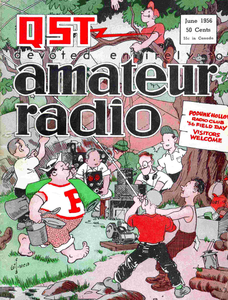
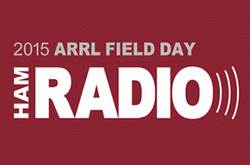 proclamation also noted the role of many radio amateurs as volunteer weather spotters. Cedar Rapids, Iowa, is the home of Rockwell Collins Radio Company, where employees will take part in a "Take Your Radio to Work Day" on June 26, with tours of the company's two Amateur Radio club stations, N0CXX and W0CXX.
proclamation also noted the role of many radio amateurs as volunteer weather spotters. Cedar Rapids, Iowa, is the home of Rockwell Collins Radio Company, where employees will take part in a "Take Your Radio to Work Day" on June 26, with tours of the company's two Amateur Radio club stations, N0CXX and W0CXX.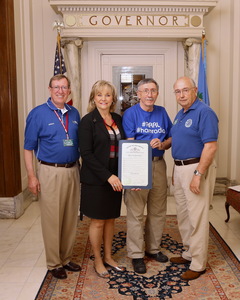

 Project leaders dedicated the activity to VHF pioneer Lenna Suominen, OH1NL (SK), who had experimented with EME in the 1960s and made the first-ever 2 meter EME contact, as well as the first transatlantic (Europe-US) on any band above 50 MHz, with Bill Conkel, W6DNG, in 1964. OJ0B used JT65B mode, developed by Joe Taylor, K1JT. Former ARRL President Joel Harrison, W5ZN, was one of the lucky US stations to work OJ0B, and Harrison served as one of the pilots for the activity.
Project leaders dedicated the activity to VHF pioneer Lenna Suominen, OH1NL (SK), who had experimented with EME in the 1960s and made the first-ever 2 meter EME contact, as well as the first transatlantic (Europe-US) on any band above 50 MHz, with Bill Conkel, W6DNG, in 1964. OJ0B used JT65B mode, developed by Joe Taylor, K1JT. Former ARRL President Joel Harrison, W5ZN, was one of the lucky US stations to work OJ0B, and Harrison served as one of the pilots for the activity.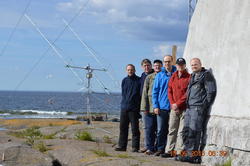
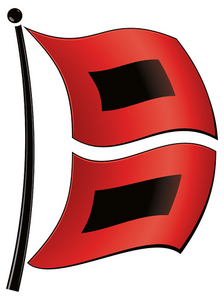 Anyone interested in hurricane preparedness and response is
Anyone interested in hurricane preparedness and response is .jpg) Save 20 percent on select ARRL antenna-themed publications when you
Save 20 percent on select ARRL antenna-themed publications when you 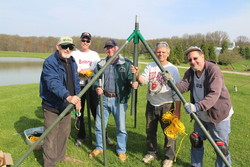
.jpg)
.png) On June 16, the primary ground control station in the Netherlands activated the transponder on QB50p2 for one orbit. AMSAT-F reports that CW telemetry was received at the
On June 16, the primary ground control station in the Netherlands activated the transponder on QB50p2 for one orbit. AMSAT-F reports that CW telemetry was received at the 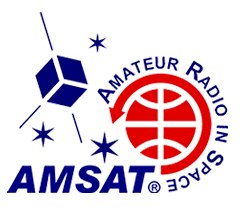 This year AMSAT-NA members will elect four voting members of the Board of Directors. These seats will go to the four candidates who receive the highest number of votes received. Two alternates will be chosen, based on the next highest number of votes received.
This year AMSAT-NA members will elect four voting members of the Board of Directors. These seats will go to the four candidates who receive the highest number of votes received. Two alternates will be chosen, based on the next highest number of votes received.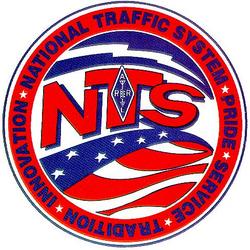 Kenneth W. Jacobs, KD6PGI, Hood River, Oregon, for technical supervision and migration support of the
Kenneth W. Jacobs, KD6PGI, Hood River, Oregon, for technical supervision and migration support of the 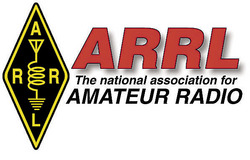 Work at ARRL Headquarters! ARRL has an opening for a receptionist at League Headquarters in Newington, Connecticut. The individual in this position is responsible for handling incoming telephone calls and messages; greeting and attending to visitors, members, and customers; overseeing the operation and presentation of the lobby greeting area; data entry, and handling other clerical duties as needed. Applicants should have a high school diploma or GED, and be proficient in Microsoft Office for Windows software, especially Word and Outlook. An experienced radio amateur is preferred, and foreign language proficiency is a plus. The complete
Work at ARRL Headquarters! ARRL has an opening for a receptionist at League Headquarters in Newington, Connecticut. The individual in this position is responsible for handling incoming telephone calls and messages; greeting and attending to visitors, members, and customers; overseeing the operation and presentation of the lobby greeting area; data entry, and handling other clerical duties as needed. Applicants should have a high school diploma or GED, and be proficient in Microsoft Office for Windows software, especially Word and Outlook. An experienced radio amateur is preferred, and foreign language proficiency is a plus. The complete  Amateur Radio Volunteers to Support Peachtree Road Race in Atlanta: Amateur Radio Volunteers will again support communication during the Peachtree Road Race, an Atlanta 4th of July tradition for 46 years. More than 50 hams from throughout the Atlanta area will provide radio communication before and during the race to aid with organization and logistics. They will be stationed at the start and finish areas and along the race route, providing the primary communication network for race organizers and officials and supplementing the public safety networks. The Atlanta Amateur Radio Emergency Service (ARES) unit will provide a command post net control station.
Amateur Radio Volunteers to Support Peachtree Road Race in Atlanta: Amateur Radio Volunteers will again support communication during the Peachtree Road Race, an Atlanta 4th of July tradition for 46 years. More than 50 hams from throughout the Atlanta area will provide radio communication before and during the race to aid with organization and logistics. They will be stationed at the start and finish areas and along the race route, providing the primary communication network for race organizers and officials and supplementing the public safety networks. The Atlanta Amateur Radio Emergency Service (ARES) unit will provide a command post net control station.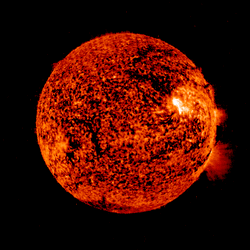 It turns out that the magnetometer at Fredericksburg, Virginia, was knocked out on 5 of the 7 days, so the mid-latitude A index we are reporting for June 18-21 and June 24 are approximations -- or actually wild guesses -- based on magnetometers that were working.
It turns out that the magnetometer at Fredericksburg, Virginia, was knocked out on 5 of the 7 days, so the mid-latitude A index we are reporting for June 18-21 and June 24 are approximations -- or actually wild guesses -- based on magnetometers that were working.







